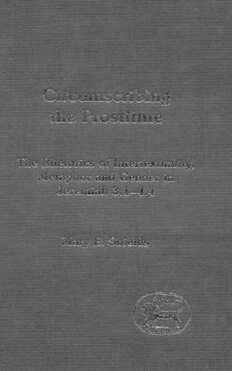
Circumscribing the Prostitute: The Rhetoric of Intertextuality, Metaphor and Gender in Jeremiah 3. 1-4. 4 (JSOT Supplement) PDF
201 Pages·2004·10.373 MB·English
Most books are stored in the elastic cloud where traffic is expensive. For this reason, we have a limit on daily download.
Preview Circumscribing the Prostitute: The Rhetoric of Intertextuality, Metaphor and Gender in Jeremiah 3. 1-4. 4 (JSOT Supplement)
Description:
In Jeremiah 3.1-4.4, the prophet employs the image of Israel as God's unfaithful wife, who acts like a prostitute. The entire passage is a rich and complex rhetorical tapestry designed to convince the people of Israel of the error of their political and religious ways, and of the need for them to change before it is too late. As well as metaphor and gender, another important thread in this tapestry is intertextuality, within which the historical, political and social contexts of both author and reader enter into dialogue and produce different interpretations. But, as Shield shows in her final chapter, it is ultimately the rhetoric of gender that actually constructs the text, providing the frame, warp and woof of the entire tapestry, and thus functioning as the prophet's primary means of persuasion. This is volume 387 in the Journal for the Study of the Old Testament Supplement series.
See more
The list of books you might like
Most books are stored in the elastic cloud where traffic is expensive. For this reason, we have a limit on daily download.
